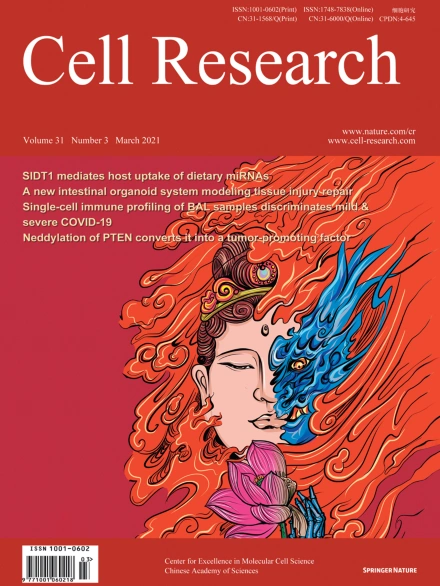
Advanced Search
Submit Manuscript
Advanced Search
Submit Manuscript
Volume 31, No 3, Mar 2021
ISSN: 1001-0602
EISSN: 1748-7838 2018
impact factor 17.848*
(Clarivate Analytics, 2019)
Volume 31 Issue 3, March 2021: 362-365
The oncogenomic function of androgen receptor in esophageal squamous cell carcinoma is directed by GATA3
Furong Huang1,2 , Hongyan Chen1 , Xiaolin Zhu1 , Tongyang Gong1 , Xukun Li1 , William Hankey2 , Hongyan Wang2 , Zhong Chen2,* , Qianben Wang2,* , Zhihua Liu1,*
1State Key Laboratory of Molecular Oncology, National Cancer Center/National Clinical Research Center for Cancer/Cancer Hospital, Chinese Academy of Medical Sciences and Peking Union Medical College, Beijing 100021, ChinaDear Editor,
Esophageal carcinoma (EC) is the 6th leading cause of cancer death worldwide. In China, esophageal squamous cell carcinoma (ESCC) is the predominant histological subtype of EC and the 4th leading cause of death from cancer.1,2 While esophagectomy has been central to the standard of care for localized ESCC, relapse often occurs rapidly. For advanced ESCC, multimodality therapies incorporating systemic chemotherapies and/or radiotherapy have yielded limited clinical benefit. Despite extensive research efforts, no targeted therapies have yet been approved for the treatment of advanced ESCC. Interestingly, ESCC is strongly characterized by a male-predominant propensity, as both incidence and mortality rate are 2–3-fold higher in males than in females.1 Previous studies have revealed a possible association between androgen receptor (AR) signaling and male ESCC.3,4 AR is a ligand-dependent transcription factor that regulates target gene expression through binding to androgen-responsive elements (AREs) in the presence of androgens. Conversely, AR antagonists (e.g., enzalutamide) compete with androgens to bind AR and inhibit its binding to AREs.5,6 To date, while the genomic function of AR has been extensively studied in prostate cancer,5,7,8 it remains unknown how AR exerts its oncogenic functions in ESCC at a genome-wide scale. Addressing this question is of high clinical relevance as it will establish a mechanistic basis for a promising therapeutic strategy targeting the AR transcription axis for ESCC patients.
https://doi.org/10.1038/s41422-020-00428-y